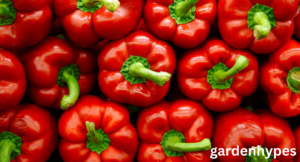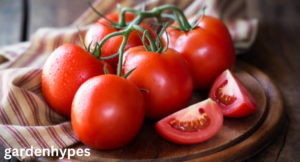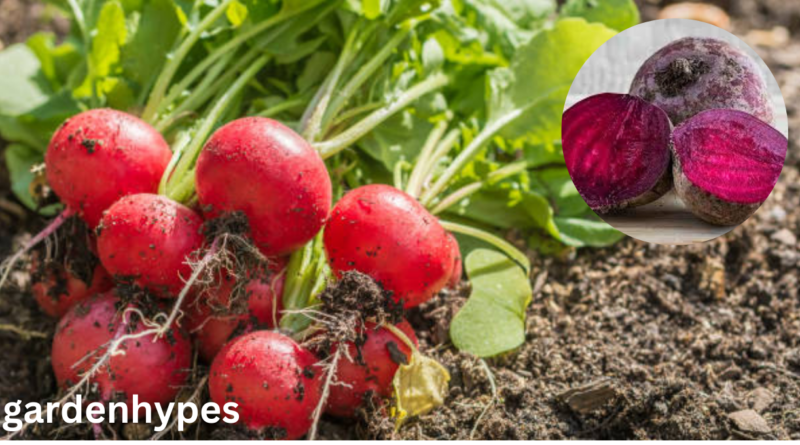Red Vegetables Nutrition Benefits & Uses
1. Introduction to Red Vegetables
When you think of red vegetables, the first thing that comes to mind might be green leafy veggies. But red vegetables hold a special place in the world of nutrition. Their bright, eye-catching color isn’t just for looks—it signals the presence of powerful plant compounds that can protect our health in many ways. From tomatoes and beets to radishes and red cabbage, these veggies are not only delicious but also incredibly beneficial for the body.
The red color in these vegetables often comes from natural pigments like lycopene and anthocyanins, both of which are strong antioxidants. These compounds fight harmful free radicals in the body, reduce inflammation, and even lower the risk of chronic diseases. Eating red vegetables regularly ensures you’re not only adding color to your plate but also protecting your long-term health.
click in link costco Quinoa Salad
In today’s fast-paced world, people often reach for fast food or highly processed snacks, forgetting that nature has already provided us with vibrant and nutrient-packed options. Red vegetables can easily fit into almost any meal, whether in a fresh salad, a hearty stew, or a quick stir-fry. They also add flavor variety—from the sweetness of red bell peppers to the earthy taste of beets.
So, why exactly should we eat more red vegetables? The answer is simple: they’re a natural medicine chest wrapped in flavor. Over the course of this blog, we’ll explore their nutritional content, specific health benefits, and how you can bring more of them into your daily diet. By the end, you’ll understand why these crimson-colored foods deserve a permanent spot in your grocery basket.
2. Nutritional Value of Red Vegetables
Red vegetables are not only visually appealing but also nutritional powerhouses. Each one comes packed with a unique blend of vitamins, minerals, and plant compounds that promote overall health. What sets them apart from other vegetables is their high content of carotenoids, anthocyanins, and flavonoids.
For example, tomatoes are one of the richest sources of lycopene, a powerful antioxidant linked to improved heart health and reduced cancer risk. Red bell peppers contain more vitamin C than most citrus fruits, making them excellent for boosting immunity and skin health. Beets, on the other hand, are loaded with nitrates that help regulate blood pressure and improve stamina.
Here’s a quick breakdown of the common nutrients found in red vegetables:
- Vitamin A – Supports vision and immunity
- Vitamin C – Boosts collagen production and fights infections
- Potassium – Helps regulate blood pressure
- Iron – Improves red blood cell production
- Antioxidants (Lycopene, Anthocyanins) – Fight inflammation and slow aging
One of the fascinating aspects of these vegetables is their synergistic effect—when you eat them together with other vegetables, the nutrients work in harmony, boosting overall absorption. For instance, pairing tomatoes with a small amount of healthy fat (like olive oil) helps your body absorb lycopene more efficiently.
Another important note is that cooking methods can influence the nutritional value. While eating raw red vegetables provides certain vitamins in their purest form, cooking can sometimes enhance other compounds. For instance, cooked tomatoes actually release more lycopene than raw ones.
In short, red vegetables are not just fillers for your plate—they are dense packages of essential nutrients that your body craves daily. Making them a staple in your meals is like giving your body a daily dose of natural multivitamins.
3. Health Benefits of Red Vegetables
Red vegetables aren’t just pretty to look at—they deliver a wide range of health benefits backed by science. Regular consumption of these vibrant foods can protect you against serious health issues while keeping your body energized and strong.
One of the major benefits is heart health. Compounds like lycopene and anthocyanins help reduce cholesterol levels, lower blood pressure, and keep arteries flexible. Studies have shown that people who consume more red vegetables have a lower risk of heart disease compared to those who don’t.
click in link costco Quinoa Salad

Red vegetables also play a crucial role in cancer prevention. Lycopene, found in tomatoes and red peppers, is especially effective in reducing the risk of prostate, breast, and lung cancers. Beets, with their high betalain content, act as detoxifiers by helping the liver remove toxins and harmful compounds from the body.
Another amazing benefit is immune system support. Red bell peppers contain almost three times more vitamin C than an orange, making them excellent for fighting colds, infections, and boosting skin health. Radishes and red cabbage provide a good dose of fiber, which not only supports digestion but also strengthens gut health—an essential part of immunity.
Additionally, red vegetables have anti-aging properties. The antioxidants fight free radicals, keeping your skin youthful and slowing down wrinkles. They also improve circulation, which results in a healthy glow.
So, if you’re looking for foods that heal, protect, and energize, red vegetables should be high on your list. Their benefits go beyond just nutrition—they actively work to safeguard your body from the inside out.
4. Popular Red Vegetables and Their Benefits
There’s a wide variety of red vegetables, each with its own unique taste and health advantages. Let’s take a closer look at some of the most popular ones you should include in your meals:
- Tomatoes – Rich in lycopene, good for heart and skin health.
- Red Bell Peppers – Packed with vitamin C, low in calories, great for weight loss.
- Beets – Known for improving blood circulation and stamina.
- Radishes – Hydrating, good for digestion, and refreshing in salads.
- Red Cabbage – Loaded with anthocyanins that fight inflammation.
Each of these vegetables offers a distinct flavor profile. Tomatoes are versatile and can be eaten raw, cooked, or blended into sauces. Red bell peppers are crunchy and slightly sweet, perfect for snacking or stir-fries. Beets add a rich earthy flavor, while radishes bring a sharp, peppery bite. Red cabbage is slightly sweet and tangy, making it ideal for salads and slaws.
By including a mix of these red vegetables, you ensure your body gets a balanced dose of vitamins, antioxidants, and minerals. Plus, eating different textures and flavors keeps meals interesting.
5. Tomatoes – The King of Red Vegetables
If there’s one red vegetable that deserves the crown, it’s the tomato. Loved worldwide, tomatoes are more than just a salad ingredient—they’re a nutritional powerhouse. Packed with lycopene, they are one of the best natural foods for protecting against heart disease and cancer. Lycopene also promotes glowing skin and reduces the risk of sun damage.
But tomatoes aren’t just about lycopene. They also provide vitamin C, vitamin K, potassium, and folate. These nutrients work together to support immunity, bone health, and nerve function. Eating tomatoes regularly can help regulate blood sugar, improve digestion, and even support eye health.
One interesting fact is that tomatoes become more powerful when cooked. Unlike most vegetables that lose nutrients after cooking, tomatoes release more lycopene when heated. That means pasta sauce, tomato soup, and even ketchup (in moderation) can be surprisingly healthy.
click in link costco Quinoa Salad

From a culinary perspective, tomatoes are extremely versatile. They can be eaten raw in salads, roasted for extra sweetness, blended into soups, or simmered into rich sauces. Whether fresh or cooked, they remain one of the easiest ways to add red vegetables into your daily diet.
Truly, tomatoes aren’t just a kitchen staple—they’re a symbol of how simple, natural foods can provide extraordinary health benefits.
faqs
- What makes red vegetables different from other colored vegetables?
Red vegetables are unique because of their high concentration of pigments like lycopene, anthocyanins, and betalains, which give them their vibrant red color. These compounds are powerful antioxidants that fight free radicals, protect against heart disease, and reduce inflammation. While green vegetables are known for chlorophyll and calcium, and orange ones for beta-carotene, red vegetables stand out for their cancer-fighting and heart-protective properties. - Can eating red vegetables help with weight loss?
Yes, absolutely. Most red vegetables, like tomatoes, red peppers, and radishes, are low in calories but rich in fiber and water content. This means they keep you full for longer without adding unnecessary calories. For example, red bell peppers provide natural sweetness without the sugar rush, making them a great snack for anyone trying to manage weight. - Are red vegetables safe for people with diabetes?
Yes, in fact, they can be very beneficial. Red vegetables like tomatoes and beets have compounds that help regulate blood sugar levels and improve insulin sensitivity. Since they are low in simple sugars and high in fiber, they prevent sudden spikes in blood sugar. However, people with diabetes should eat starchy red vegetables, like beets, in moderation to avoid excess carbohydrate intake. - Do red vegetables lose their nutrients when cooked?
It depends on the vegetable. Some red vegetables, like tomatoes, actually become more nutritious when cooked because heat increases the bioavailability of lycopene. On the other hand, red peppers and red cabbage may lose a small amount of vitamin C when exposed to high heat. A balanced approach—eating some raw and some cooked—ensures you get the best of both worlds. - How can I add more red vegetables to my daily diet easily?
It’s simpler than you think. You can:
- Toss tomatoes and radishes into your salads.
- Snack on red bell pepper slices with hummus.
- Roast beets and add them to grain bowls.
- Use red cabbage for crunchy slaws.
- Blend tomatoes into soups and sauces.
By making small swaps, like replacing lettuce with shredded red cabbage or snacking on peppers instead of chips, you can easily eat more red vegetables without changing your diet drastically.
